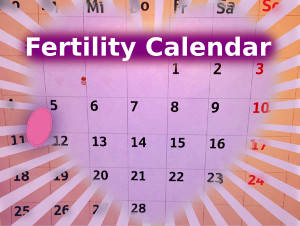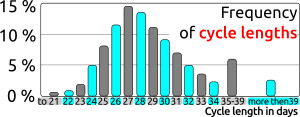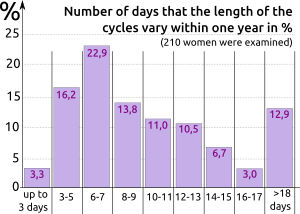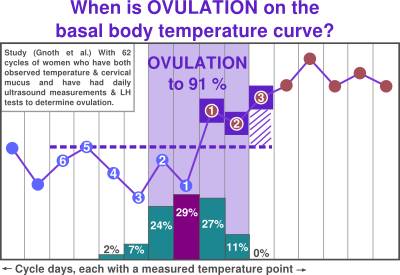 Are you looking for a Get Pregnant with a Fertility Calendar that will help you to determine your fertile days? Here’s how to do it…
Are you looking for a Get Pregnant with a Fertility Calendar that will help you to determine your fertile days? Here’s how to do it…
As a fertility expert, I often meet women who wants a supercomputer, an ovulation calculator or a fertility calendar to accurately calculate their fertile days. But are they fertility calculator or calendar? Can such a complex subject as the shared fertility in men and women with simple primary school maths really be understood?
In this article I will show you how to limit your fertile days as well as ovulation to fewer days, using a scientifically proven method. With this study, 81% of the women gets pregnant within 6 months. If you want to know more about this, read this article until the end!
How do you calculate the fertile days?
Unfortunately, you can’t calculate your fertile days directly. This is because the natural cycle is subject to unpredictable fluctuations and thus, impossible to calculate. For example, the natural cycle varies between 23 and 35 days and from one woman to another as well as from one cycle to another.
 The fixed 28-day cycle, becomes a myth with the introduction of the pill, which is very rare in the natural cycle, without artificial hormonal influence from the outside. In addition, ovulation does not always occur exactly 14 days before menstruation, as was still thought in the 1930s and during that period, we attempted to calculate ovulation and fertile days. Ovulation or fertility calculators therefore emerged from a time when one knew almost nothing about fertile days and ovulation which are therefore overwhelmed. In our article “ovulation calculator, how good are they? “, Here, all is shown using concrete examples of why it’s impossible to calculate the real fertile days. However, the latest scientific discoveries shows that fertile days can be very well determined by observing the ovulation signs during the cycle and that ovulation can be limited to a few days. Therefore, it’s much more important to use a type of fertility calendar (cycle sheet) to document the ovulation signs such as cervical mucus or basal body temperature. With this fertility calendar, you can determine when your fertile days are in the current cycle by applying strict rules for the temperature curve and mucus.
The fixed 28-day cycle, becomes a myth with the introduction of the pill, which is very rare in the natural cycle, without artificial hormonal influence from the outside. In addition, ovulation does not always occur exactly 14 days before menstruation, as was still thought in the 1930s and during that period, we attempted to calculate ovulation and fertile days. Ovulation or fertility calculators therefore emerged from a time when one knew almost nothing about fertile days and ovulation which are therefore overwhelmed. In our article “ovulation calculator, how good are they? “, Here, all is shown using concrete examples of why it’s impossible to calculate the real fertile days. However, the latest scientific discoveries shows that fertile days can be very well determined by observing the ovulation signs during the cycle and that ovulation can be limited to a few days. Therefore, it’s much more important to use a type of fertility calendar (cycle sheet) to document the ovulation signs such as cervical mucus or basal body temperature. With this fertility calendar, you can determine when your fertile days are in the current cycle by applying strict rules for the temperature curve and mucus.
So you can evaluate your cycle without the need for a computer or medical staff to tell you when you’re fertile. You can do it much more accurately and properly! This is because the natural cycle is extremely complex and always subject to unpredictable fluctuations. So, with blood tests, LH tests and computers that can’t measure your “extreme point” temperature, can’t figure out your cycle as accurately as if you were informing and monitoring your fertility signs on a daily basis. Everything you need, you will find it in our basic Get Pregnant Starter Set, which I recommend you to start here.
Fertile days calculated in an irregular cycle
 At this point, it’s important for me to say that a woman’s natural cycle is actually more or less irregular. The woman’s cycle length fluctuates, even when everything is healthy, in most women between 23 and 35 days. Of course, there are women whose cycle length varies only by 3 days, but statistically, it’s only 3% of the women and therefore an absolute exception and a minority. In fact, for most women, the cycle length varies from about a week in a year. Thus, it can be said that the fluctuations in the cycle are usually quite normal. So we can’t talk about a very irregular cycle unless the cycle is shorter than 23 days and longer than 35 days. This can be the case. As after stopping the pill, during puberty, with PCOS, breastfeeding, menopause, etc. Now, as I’ve already mentioned, the fertility and ovulation calculators do not work simply because the natural cycle fluctuates so spectacularly. Therefore, it should be clear that a fertility or an ovulation calculator is quite wrong when determining the fertile days with even greater fluctuations in cycle length, as they occur more often in the PCOS or after the pill is stopped. We’ve already shown this in our article “Do ovulation computers work even with irregular cycles?” in a very detailed way with examples of real cycles.
At this point, it’s important for me to say that a woman’s natural cycle is actually more or less irregular. The woman’s cycle length fluctuates, even when everything is healthy, in most women between 23 and 35 days. Of course, there are women whose cycle length varies only by 3 days, but statistically, it’s only 3% of the women and therefore an absolute exception and a minority. In fact, for most women, the cycle length varies from about a week in a year. Thus, it can be said that the fluctuations in the cycle are usually quite normal. So we can’t talk about a very irregular cycle unless the cycle is shorter than 23 days and longer than 35 days. This can be the case. As after stopping the pill, during puberty, with PCOS, breastfeeding, menopause, etc. Now, as I’ve already mentioned, the fertility and ovulation calculators do not work simply because the natural cycle fluctuates so spectacularly. Therefore, it should be clear that a fertility or an ovulation calculator is quite wrong when determining the fertile days with even greater fluctuations in cycle length, as they occur more often in the PCOS or after the pill is stopped. We’ve already shown this in our article “Do ovulation computers work even with irregular cycles?” in a very detailed way with examples of real cycles.
The good news is that with a Fertility Awareness sheet (cycle sheet or Fertility Awareness application), fertile days can be determined even with irregular cycles by observing ovulation signs such as mucus and temperature. With the Fertility Awareness method, fertile days can be determined in about 94.5% of the cycles, case study (Rosmus T 2002). Even with posted work, fertile days can still be limited in 90% of cycles. The Symptothermal Method gives you the enormous advantage that’s applicable in all types of cycles, whether extremely long or short. This is a considerable advantage, especially in relation to an expensive cycle computer, which often indicates limited applicability in extremely long or short cycles in the package leaflet. For example, the Cyclotest myWay only applies up to a cycle length of 45 days, even in the case of PERSONA, cycles over 32 days are a major problem. With the Symptothermal Method, cycles of more than 100 days do not pose any problems. You are guided by the fertility signs, such as cervical mucus and basal body temperature, which indicates to you every day in the current cycle whether you’re fertile or not. So you can’t miss your ovulation and to always have sex on time so as to get pregnant. That’s it, right?
Fertility Calendar App
There are countless fertility calendar Apps on the market. In a study by the Stiftung Warentest of 2017, my experience could be confirmed by the fact that most applications, unfortunately are unsuitable to successfully determine the fertile days. This is largely because most applications calculate the fertile days according to previous cycle lengths (Forecast Apps or Menstrual Calendar Apps) and very few Apps have an algorithm suitable for evaluating fertility signs. The result of the Stiftung Warentest study is alarming because no App has achieved Grade 1 (very good). Only three Fertility Awareness Apps based on the Symptothermal Method were rated at Grade two (good) and three (satisfactory). As far as data protection is concerned, I would like to emphasize that free Apps mainly secure their incomes via data sales and that many Apps have also failed in terms of data security. That’s why you need to think carefully about the App to use. We can only recommend that the fertile days are determined by the Symptothermal Method using a Fertility Awareness sheet (Fertility Awareness cycle sheet) or an appropriate Fertility Awareness App. Of course, the exact knowledge of the Fertility Awareness method is crucial. After all, the best App is worthless if the ovulation signs are not typed correctly. For this reason, we recommend reading a book or attending a course so as to learn the method.
Recognizing fertile days without a Fertility Calendar or calculator
Instead of using a fertility calculator, an ovulation calculator or a classic fertility calendar to calculate your fertile days, you can easily use the Symptothermal Method to determine your fertile days and find out when you’re fertile.
In our book “WHEN AM I FERTILE?”, you will find a step-by-step guide to the Symptothermal Method and learn exactly how to determine your fertile days. In this same book, you will also find exercises and solutions, in order to be able to directly check your acquired knowledge. The Fertility Awareness section in daily life is particularly successful, where recommended Apps, thermometers including user tips are given, so that you can actually use the Fertility Awareness in your daily life. Equally in this eBook, you will find a chapter on cycle diagnostics, in which you will learn how to circumscribe the causes of why a pregnancy hasn’t worked out. Finally, in the third and final chapter, you will find 15 testimonials of women working with Fertility Awareness despite the posted work, Endometriosis, PCOS, cyclic chaos after cessation of treatment, a mediocre/bad spermiogram, long waiting period, etc.
Fertility Awareness boosts chances of getting pregnant
Pregnancy Rate with Fertility Awareness after 6 and 12 Months
The fact that Fertility Awareness can naturally increase the chances of getting pregnant has been proven by several studies. For example, in a study conducted in 2003 on Fertility Awareness, about 81% of the women were pregnant in the space of six months. In comparison, only 60% of women gets pregnant in a year without using a special method. Even in cases of difficulties, i.e. in women over 35 years of age and older with health problems that have been waiting for at least a year, despite unprotected sex for their desired child, studies have shown a higher probability of pregnancy with the Fertility Awareness App.
So from my point of view, you don’t need a classic fertility calendar, fertility calculator or computer that will give you a rough and inaccurate indication of your fertility period. Especially in difficult cycles or very fluctuating and irregular cycles, self-assessment of the ovulation signs works best. Try it out!
When are woman’s fertile days?
Biologically, a woman can get pregnant when the egg and sperm meets. Now, the egg can remain fertile for about 12 to 18 hours (about a day), as well as about 3 to 5 days in the woman’s body. This translates into a common biologically fertile period of about 6 days per cycle.

The fertile window is composed of the survivability of the sperm (5 days) and the day when the egg is fertile
Currently, the Symptothermal Method is the best method for determining the highly fertile days in a cycle. Unfortunately, ovulation cannot be predicted with any method in the world. Therefore, there is only a methodological number of fertile days, which is usually more than 6 days per cycle. Our experience and studies shows that in women whose cycle lasts between 23 and 35 days, about 10 to 14 days per cycle are methodologically fertile.
We have already said that woman’s cycles are very different. Unfortunately, this does not help any woman if I specify certain cycle days that should be fertile. Finally, a woman with PCO-syndrome with a 100-day cycles will have very different fertile days from those of a woman without a PCO with an average cycle length of 23 to 35 days. Even with one and the same woman, the cycle length and during ovulation varies so much that there is no overall response. However, it’s possible for almost all women, based on their individual documented temperature curve associated with the evolution of cervical mucus with Fertility Awareness, to determine their fertile days.
When are the most fertile days?
You have the highest fertility when you observe the cervical mucus of your individual mucus quality or when your cervix is soft, open and well standing. In combination with basal body temperature, you can also know when ovulation is over and if you’re pregnant.
When can a woman get pregnant?
The period during which a woman can get pregnant lies before ovulation and during the ovulation phase itself, mainly during the first phase of the cycle (the maturation phase). The probability of getting pregnant is maximum between 20 and 34 years. Of course, it’s also possible to get pregnant naturally from 35 years of age. However, with this article, we want to raise awareness that the fertility in women and men decreases with age. Women who are aware of this are always trying to make the most of each cycle and maximize their existing fertility. Of course, it makes sense to use Fertility Awareness because one can easily have sex at each cycle for optimal fertility and thus, not ovulate. In addition to our eBook, there is currently an interesting Bonus Book on the theme “Get Pregnant after 35 +”, where you can find interesting information on how to make the most use of your existing natural fertility.
Conclusion on Fertility Calendar
In summary, fertile days cannot be calculated using a fertility calculator, fertility calendar or ovulation calculator. Therefore, I would like to clearly advise against the use of a fertility calculator or a fertility calendar if you’re looking for the desired child. The natural cycle is subject to fluctuations that makes almost all women to have natural “irregular cycles” between 23 and 35 days. The idea of a fixed 28- day cycle or similar is a pure fixation, caused by the pill, which many women now take from 12 years, without having ever met their true natural cycle. The hormones contained in the pill constitute a 28-day artificial cycle that completely covers the natural cycle. If you put the pill at the time that you’re looking for your desired child, the natural cycle will reappear, which can vary naturally between 23 and 35 days. I experienced often that the desire of women to calculate the number of fertile days is also associated with some loss of control of the pill’s artificial 28-day cycle. But irregular cycles are beautiful, offer variety and models of always exciting cycles. It does not need a fertility calculator, fertility calendar nor cycle computer, as there is a Symptothermal Method. The determination of fertile days works with the Symptothermal Method at each cycle length and almost every cycle of a woman who has a natural cycle i.e. a Menstrual Hemorrhage. In short, it makes more sense managing your own fertility and cycle when you want to get pregnant as naturally as possible. I naturally became pregnant twice in spite of Hashimoto and luteal insufficiency during the first cycle in which I tried to get pregnant with Fertility Awareness. Thus, from my own experience, I can recommend that you learn and apply the Symptothermal Method with a book if you wish to have your desired child.
I wish you all the best on your way to the desired child
YOURS ANNE





